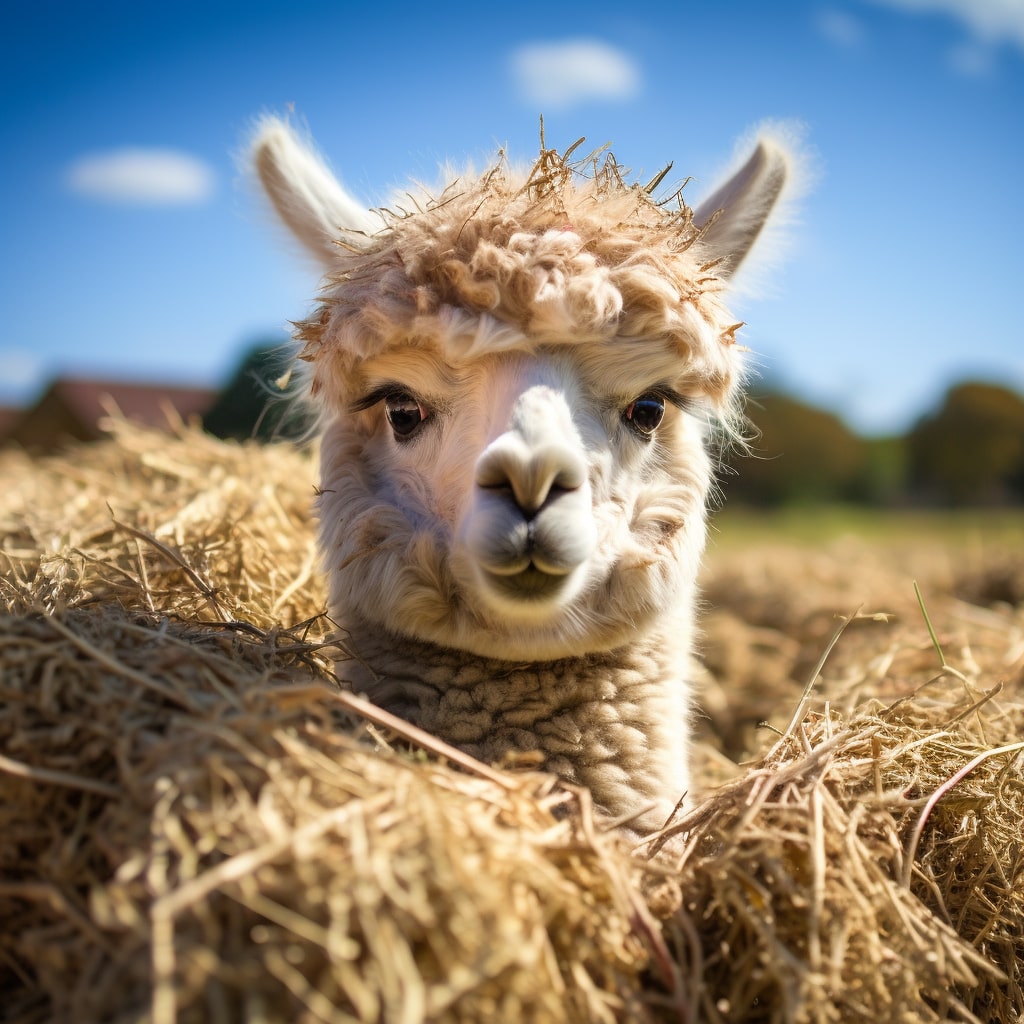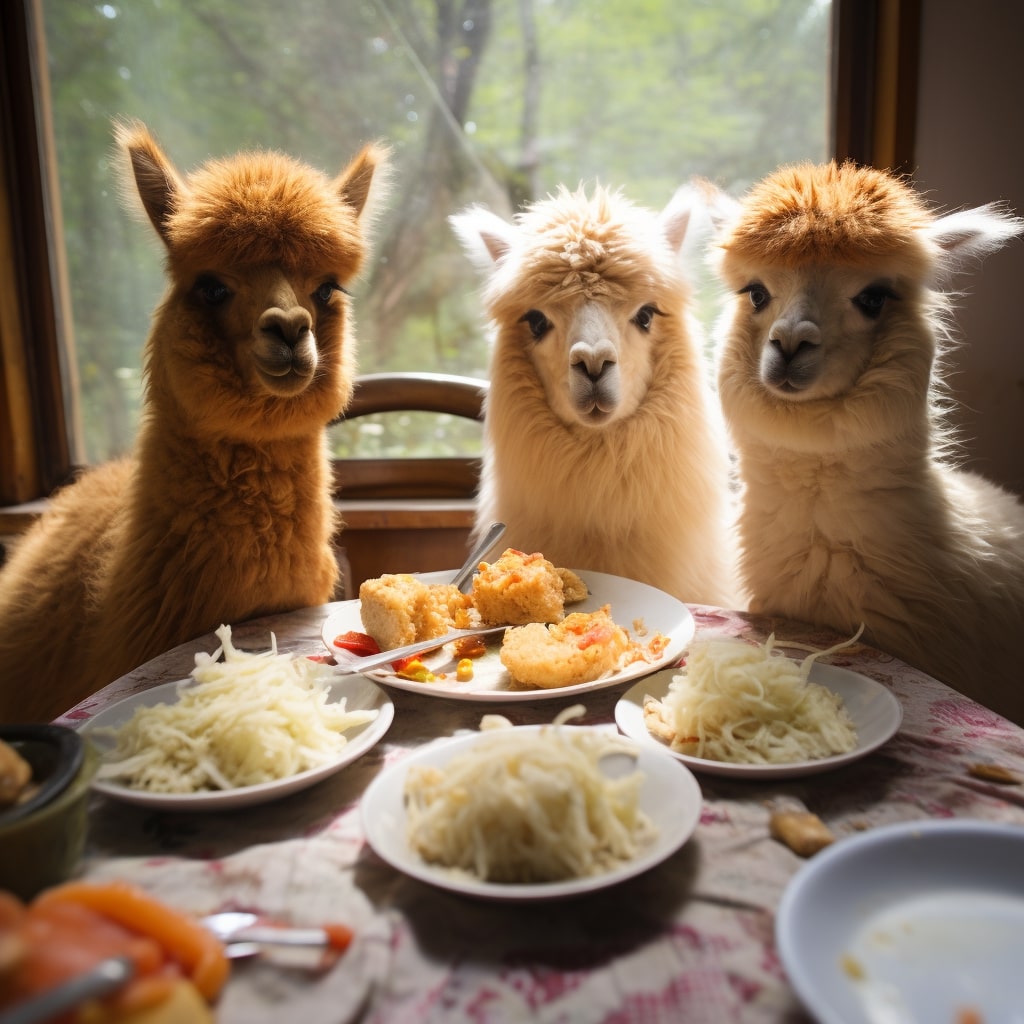Alpacas require a diet primarily consisting of grass, as they are herbivores, but it can be supplemented with hay, stems, and leaves. In their native countries, alpacas have access to a variety of mosses, shrubs, forages, and herbs, providing them with essential minerals and vitamins. In Europe, where replicating such a diet is challenging, it is necessary to ensure alpacas receive the right amount of vitamins, minerals, and proteins through supplements.
How to feed alpacas
Alpacas generally need about 2 kg of vegetation per day, consisting of fresh grass and hay depending on their needs, and between 3 to 5 liters of water daily.
Alpacas have a stomach with three compartments, allowing them to digest forage very efficiently. They need to consume an amount equal to 1.5% of their body weight. A green pasture can provide all the necessary nutrients for up to ten alpacas per 10,000 square meters unless supplements are needed. Alternatively, about 2 kg of quality hay per animal per day is required.
The diet may vary during certain times of the year or under specific circumstances to meet the animals’ needs and reduce disease risks, such as during winter or pregnancy, providing the necessary vitamins and nutrients.

Winter nutrition
In winter or colder seasons, alpacas should be fed grass, hay, and feed twice a day. Hay should always be available, even if there is a green pasture, to avoid digestion issues. Alpacas should regurgitate and chew their cud twice after ingesting forage, and chew each bite ten times. If an alpaca does not ruminate for an entire day, it may be ill.
Nutrition during pregnancy
Pregnant or nursing females require a protein-rich diet to counteract weight loss and weakness. From the second month of life, cria’s diet should also include feed, supplements of vitamins A, B, E, K, and minerals such as selenium, copper, and zinc. A protein deficiency can lead to weight loss, growth stunting in alpaca calves, and hepatic steatosis in pregnant females.

Water and alpacas
Alpacas love water and use it not only for drinking but also for bathing. Water should always be available through proper drinking facilities, which should be kept clean, shaded, and ice-free.
It is advisable to provide bathing tanks where alpacas can bathe. Bathing areas should be cleaned and treated periodically with anti-parasitic agents. It is recommended not to treat the animal directly with repellents or protective agents.
In summer and during pregnancy, alpacas require more water; they can drink up to 8-10 liters depending on the heat and their environment. It is crucial, therefore, to provide plenty of water and frequently check the water sources.
